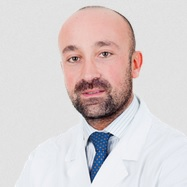Modulating Therapeutic Properties of Oral Tissue-Derived Mesenchymal Stem Cells
A special issue of Journal of Personalized Medicine (ISSN 2075-4426). This special issue belongs to the section "Clinical Medicine, Cell, and Organism Physiology".
Deadline for manuscript submissions: closed (30 June 2022) | Viewed by 24920
Special Issue Editor
Interests: endodontics; restorative dentistry; oral surgery; dental implantology; prosthetics
Special Issues, Collections and Topics in MDPI journals
Special Issue Information
Dear Colleagues,
Mesenchymal stem cells have been shown to exhibit significant regenerative potential and have also shown immunomodulatory properties, allowing them to be introduced into a host without eliciting any adverse immune response. Additionally, mesenchymal stem cells have been shown to exhibit tropism toward injured/pathological sites, thus allowing for a targeted therapeutic modality.
Oral-tissue-derived mesenchymal stem cells have gained popularity due to their ready availability, especially mesenchymal stem cells derived from the exfoliated human primary tooth and the human permanent tooth extracted for orthodontic purposes. Despite the increasing number of applications of oral-tissue-derived mesenchymal stem cells, their regenerative potential has been shown to exhibit limitations. Thus, there is an increasing interest in the modulation of the various properties of oral tissue-derived mesenchymal stem cells to enhance their regenerative ability. The present Special Issue will focus on the augmentation of the regenerative potential of oral-tissue-derived mesenchymal stem cells through pre-conditioning with various pharmaceutical agents. Articles assessing the modulation of key mesenchymal stem cell properties, including the potential for differentiation, tropism, mineralization, angiogenesis, clonogenicity, senescence resistance, immunomodulation, recovery following short and long-term preservation, etc. will be considered for publication.
We invite authors to submit original research articles and clinical studies. Review articles are also welcome if they summarize the synthesis of new approaches in these fields.
Prof. Dr. Luca Testarelli
Guest Editor
Manuscript Submission Information
Manuscripts should be submitted online at www.mdpi.com by registering and logging in to this website. Once you are registered, click here to go to the submission form. Manuscripts can be submitted until the deadline. All submissions that pass pre-check are peer-reviewed. Accepted papers will be published continuously in the journal (as soon as accepted) and will be listed together on the special issue website. Research articles, review articles as well as short communications are invited. For planned papers, a title and short abstract (about 100 words) can be sent to the Editorial Office for announcement on this website.
Submitted manuscripts should not have been published previously, nor be under consideration for publication elsewhere (except conference proceedings papers). All manuscripts are thoroughly refereed through a single-blind peer-review process. A guide for authors and other relevant information for submission of manuscripts is available on the Instructions for Authors page. Journal of Personalized Medicine is an international peer-reviewed open access monthly journal published by MDPI.
Please visit the Instructions for Authors page before submitting a manuscript. The Article Processing Charge (APC) for publication in this open access journal is 2600 CHF (Swiss Francs). Submitted papers should be well formatted and use good English. Authors may use MDPI's English editing service prior to publication or during author revisions.
Keywords
- Dental pulp stem cells
- Gingival stem cells
- SHEDs
- Tissue regeneration
- Mesenchymal stem cell
- Oral tissue regeneration






